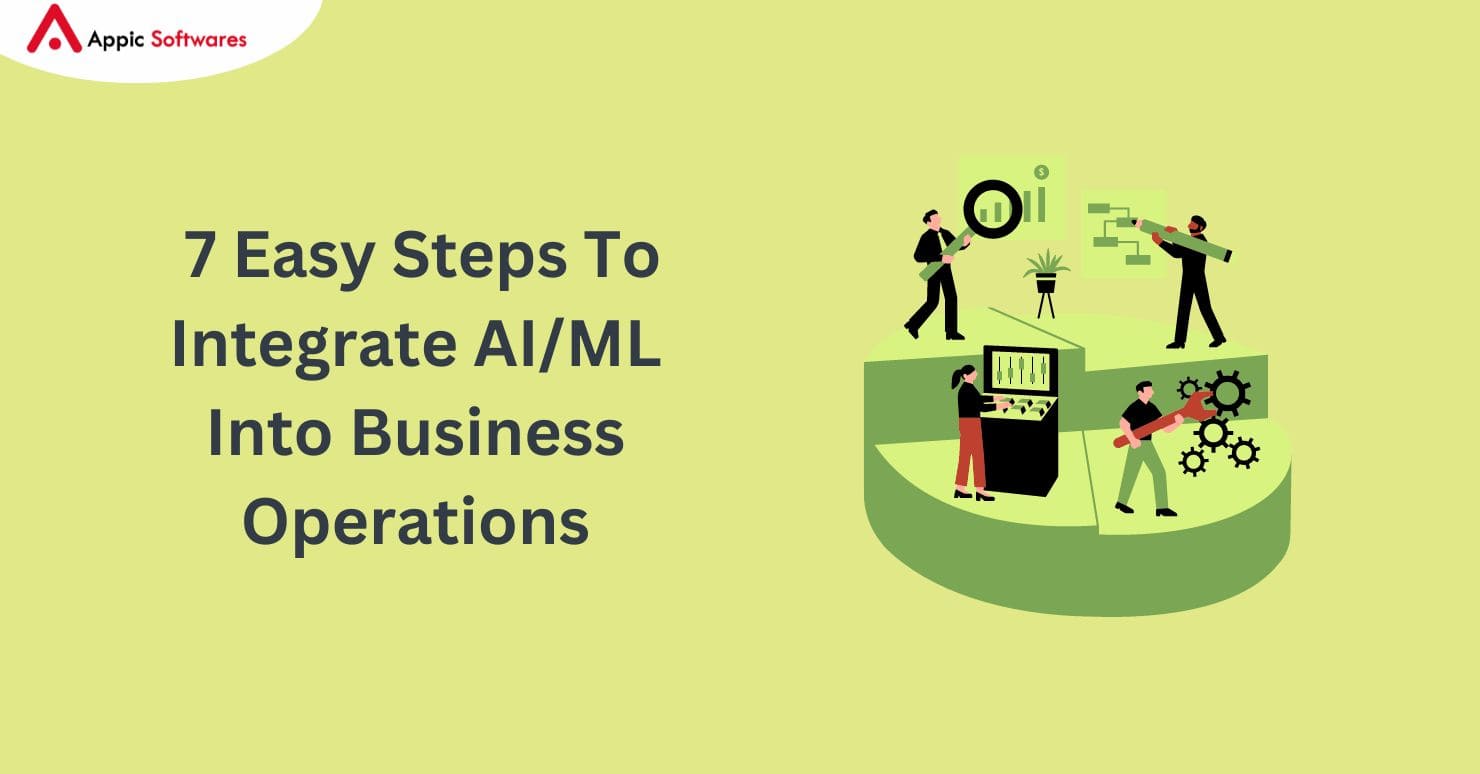7 Easy Steps To Integrate AI/ML Into Business Operations

Harnessing the potential of Artificial Intelligence (AI) and staying abreast of rapid technological advancements is imperative for businesses to remain competitive in today’s dynamic landscape. Neglecting this aspect may lead to obsolescence soon. AI and Machine Learning (ML) have emerged as pivotal tools driving efficiency, cost reduction, and value creation across various industries. However, many business leaders grapple with questions surrounding the affordability, implementation, and integration of AI into their existing workflows.
The Next Move Strategy Consulting expects the AI market to grow 20% by 2030, emphasizing the need for enterprises to adopt AI solutions. To address these concerns and maximize the benefits, you must grasp AI and ML integration techniques and their effects on future business operations.
- Understanding The Basics
- Key Benefits Of Integration
- Challenges And Solutions
- Steps To Integration
- Real-world Applications
Understanding The Basics
As businesses evolve, grasping the fundamentals of AI and ML integration becomes paramount for maintaining competitiveness. Let’s simplify the essentials:
- AI and Machine Learning Integration Strategies: Effective integration involves strategic deployment of AI and ML technologies to enhance operational efficiency and productivity.
- Future of Business Operations with AI and ML: AI and ML are not mere trends but transformative forces shaping the future of business operations, offering adaptability and resilience in a dynamic market.
- AI and Machine Learning Integration: Integration entails seamlessly embedding AI and ML into existing processes, rather than treating them as standalone solutions.
- Machine Learning Development: This involves creating algorithms enabling machines to learn from data, adapting to the evolving business landscape.
Choosing the right framework, such as TensorFlow, PyTorch, or Scikit-Learn, is crucial, with each offering unique strengths tailored to specific business needs.
Key Benefits Of Integration
Unlocking the benefits of combining AI and machine learning is a smart move that can have huge effects:
- Enhanced Decision-Making: AI and ML facilitate informed decision-making by analyzing vast datasets to extract valuable insights.
- Improved Operational Efficiency: Automation streamlines processes, minimizes manual intervention, and reduces errors, thereby enhancing efficiency.
- Personalized Customer Experiences: Predictive analytics enables businesses to tailor customer interactions, delivering customized services that resonate with individual preferences.
- Increased Productivity and Automation: Automation of routine tasks allows teams to focus on higher-value activities, thereby boosting overall productivity.
Challenges And Solutions

While integrating AI and ML into business operations offers immense potential, it also presents specific challenges. Addressing these pitfalls requires proactive measures:
- Integration Complexity: Adopting a phased approach and starting with smaller, manageable projects can mitigate the complexity of AI and ML integration.
- Data Quality and Security Concerns: Implementing robust data quality measures, encryption protocols, and regular audits can safeguard against data integrity issues and security threats.
- AI Talent Shortage: Collaborating with top machine learning development companies or hiring AI experts can help overcome the shortage of skilled professionals.
- Resistance to Change: Comprehensive training programs and ongoing support can alleviate employee resistance to changes introduced by AI integration.
Steps To Integration
Integrating AI and ML into business operations can be transformative if approached strategically. Here are the steps to ensure a smooth integration:
- Assess Business Needs: Identify areas where AI and ML can add value, pinpointing processes that could benefit from automation and predictive analytics.
- Choose the Right Frameworks: Explore popular AI and machine learning frameworks and select those that align with your business requirements.
- Integrating Machine Learning Models Into Software Applications: Develop a plan for seamlessly incorporating machine learning models into existing software applications without causing disruptions.
- Training and Skill Development: Invest in training programs for your team or consider hiring AI experts to build internal capabilities for effective AI and ML utilization.
- Pilot Projects for Testing: Initiate small-scale pilot projects to test integration feasibility and gather feedback for improvements.
- Machine Learning for Business Optimization: Leverage machine learning for optimizing business processes, continuously monitoring and refining models to align with evolving needs.
- AI Solutions for Operational Challenges: Identify specific operational challenges and deploy AI-driven solutions systematically to address them.
Real-world Applications
Leading companies across various sectors are leveraging AI to drive innovation and redefine operations:
Here’s one example of how AI is changing certain industries:
- Amazon: They use artificial intelligence (AI) to customize product recommendations, optimize supply networks, and stop fraud. In the financial industry, Bank of America uses AI for investment management, fraud detection, and client interactions.
- Siemens: They use AI to improve production procedures, support quality control, and anticipate equipment breakdowns.
- IBM Watson: They are revolutionizing the medical field. Watson can evaluate medical images with superhuman precision by utilizing machine learning in predictive analytics and decision-making. Watson works with physicians to customize treatment regimens based on your particular genetic composition.
- Uber: AI goes beyond just a straightforward ride-finding tool thanks to its smooth AI and machine learning integration. It becomes your traffic strategist by dynamically examining traffic trends in real-time. This clever technology anticipates traffic and provides a ride along with a well-thought-out itinerary.
Conclusion
Integrating AI/ML is not just a trend but a strategic imperative for businesses aiming to thrive in today’s evolving landscape. Partnering with AI service companies can facilitate this transition effectively. By embracing AI and ML, businesses can optimize operations, foster innovation, and ensure sustainable growth in the long run.
Take your business to the next level with AI and ML integration. Start your journey today with Appic Softwares, your trusted partner in leveraging cutting-edge technology to optimize operations and drive growth. Contact us now to learn more!



